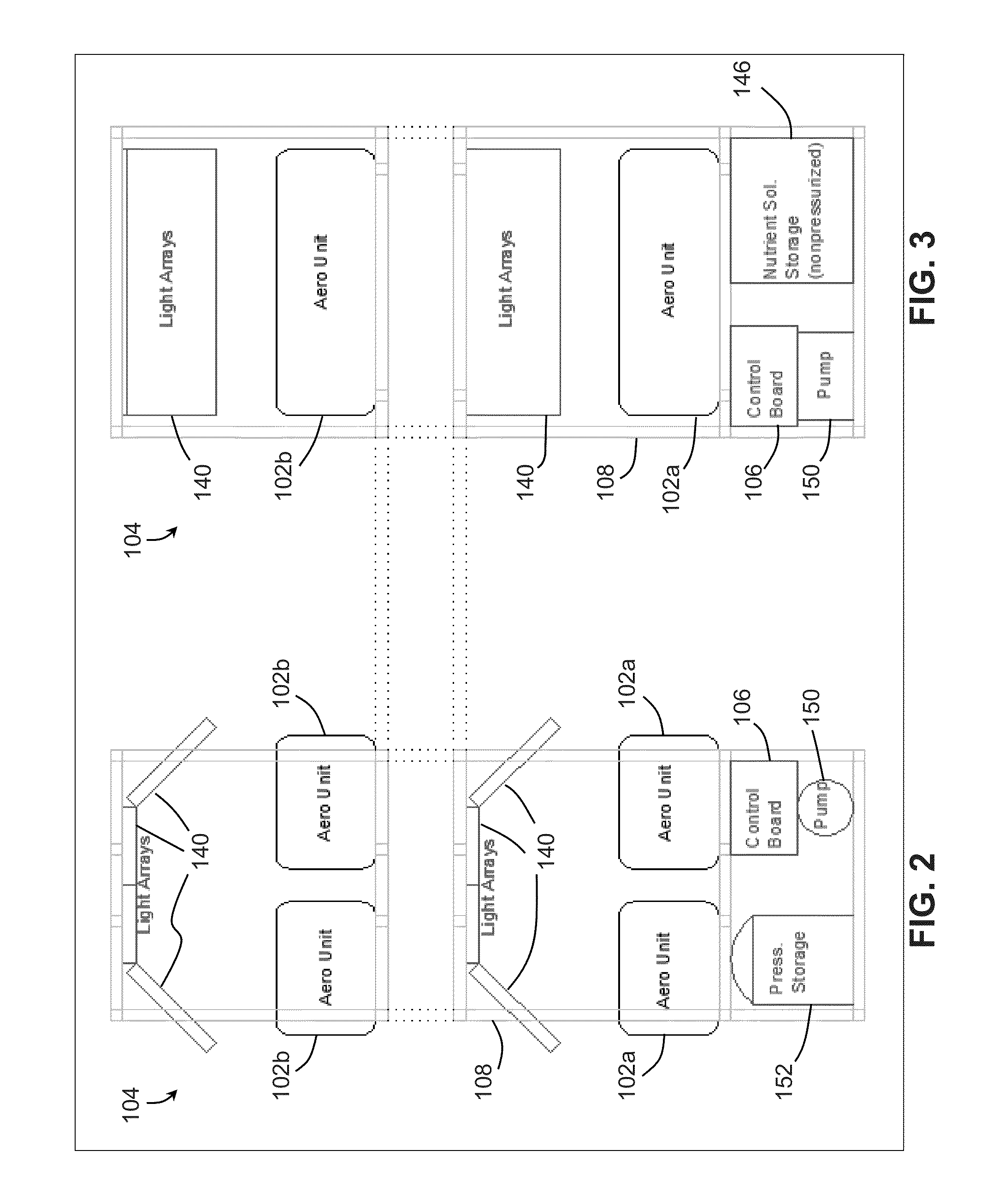Modular Automated Aeroponic Growth System
an automated, aeroponic technology, applied in botany apparatus and processes, agriculture gas emission reduction, agriculture, etc., can solve the problems of poor crop reliability, degraded growth root mass, interference of spray pattern of misters, etc., and achieve the effect of reducing the number of nutrient tea atomizers and other misters, and improving the reliability of crop production
- Summary
- Abstract
- Description
- Claims
- Application Information
AI Technical Summary
Benefits of technology
Problems solved by technology
Method used
Image
Examples
Embodiment Construction
[0028]In general, the present invention provides a modular “plug-and-play” aeroponic growth system which allows for efficient maintenance and / or expansion of individual modular aeroponic units within the system without interrupting or otherwise disturbing the operation of other individual modular aeroponic units. The present system also configures the positioning and cone angles of the atomizers / misters (referred to herein as “spray nozzles”) and the structure of the modular aeroponic units to minimize the occurrence of wet or dry zones within a root zone. The present system also provides an automated system controller that may implement preprogrammed spray operations, monitor and control the temperature, humidity (i.e., activation of the spray nozzles), CO2 levels, light quality, light intensity, and other suitable plant growth parameters, and initiate alarms in the event of high or low sensor readings, pump failure, pressure loss, water loss, power failure or the occurrence of any...
PUM
 Login to View More
Login to View More Abstract
Description
Claims
Application Information
 Login to View More
Login to View More - R&D
- Intellectual Property
- Life Sciences
- Materials
- Tech Scout
- Unparalleled Data Quality
- Higher Quality Content
- 60% Fewer Hallucinations
Browse by: Latest US Patents, China's latest patents, Technical Efficacy Thesaurus, Application Domain, Technology Topic, Popular Technical Reports.
© 2025 PatSnap. All rights reserved.Legal|Privacy policy|Modern Slavery Act Transparency Statement|Sitemap|About US| Contact US: help@patsnap.com



